Harold Eugene Edgerton. Photographe Américain né en 1903 à Fremont, Nebraska et décédé à Boston en 1990. Il a étudié de 1921-23 à l'Université de Nebraska et de 1926-27 à l'Institut de Technologie du Massachusetts de Cambridge, où il fut lui-même enseignant à partir de 1928. Photographe indépendant, il met au point la stroboscopie, procédé de décomposition du mouvement. Beaucoup de ses travaux comptent parmi les jalons de la High Speed Photography et lui valurent nombre de disctinctions internationales.
Vente Bassenge Photography Auction | 19th - 21st Century Photography Vente Ventes : Photographie Moderne et Contemporaine - 25 mai 2016 Vente Vente Christie's: Agathe Gaillard, souvenirs d'une pionnière de la photographie Vente «Photographies modernes et contemporaines»: vente aux enchères Exposition Exhibition : « ? The Image as Question » at Michael Hoppen Gallery Exposition Exhibition : first major photography survey in 27 years at Wadsworth Atheneum Museum of Art Exposition Exposition : Experimental photography Exposition « Experimental Photography » at PNDN gallery Exposition Experimental Photography : solarization, photogram, vortograph, rayograph, photomontage... Exposition Michael Hoppen Gallery presents Dr. Harold Edgerton Exposition Harold E. Edgerton presents « Seeing the unseen » at Feroz Gallery Exposition Auer Photofoundation présente « Mouvances », Les Tribulations de la photographie dans le monde de l'art de 1888 à nos jours Exposition « Second Nature : Abstract Photography Then and Now » s'expose au DeCordova Museum Exposition COLOUR à la Michael Hoppen Gallery Exposition Photographies scientifiques XIX, XX, et XXI siècles Modifier l'image
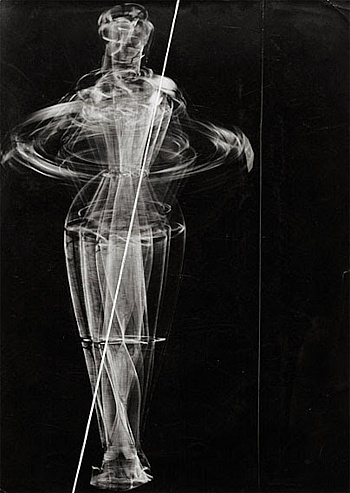 Bassenge Photography Auction 107
19th – 21st Century Photography with a Special section of 19th Century Photographs of India (G. Heil Collection)
Including photographs by:
Leopold Ahrendts | Leopoldi Alinari | James Anderson | Thomas Andrew | Dieter Appelt | Eugène Atget | Edouard-Denis Baldus | Georg Barker | Max Baur | Felice Beato | Bernd und Hilla Becher | Emil Bieber | Ilse Bing | Walter Bird | Oliver Boberg | Robert Bothner | Samuel Bourne | Bourne & Shepherd | Josef Breitenbach | Émile Brugsch | Jewgeni Chaldej | Lucien Clergue | Tommaso Cuccioni | Lala Deen Dayal | Maxime du Camp | Harold Edgerton | Walker Evans | Louis Faurer | Allen Frame | Robert Frank | Francis Frith | Vincenzo Galdi | Jean Théophile Geiser | Wilhelm von Gloeden
Lot 4181
Harry Callahan. "...
Bassenge Photography Auction 107
19th – 21st Century Photography with a Special section of 19th Century Photographs of India (G. Heil Collection)
Including photographs by:
Leopold Ahrendts | Leopoldi Alinari | James Anderson | Thomas Andrew | Dieter Appelt | Eugène Atget | Edouard-Denis Baldus | Georg Barker | Max Baur | Felice Beato | Bernd und Hilla Becher | Emil Bieber | Ilse Bing | Walter Bird | Oliver Boberg | Robert Bothner | Samuel Bourne | Bourne & Shepherd | Josef Breitenbach | Émile Brugsch | Jewgeni Chaldej | Lucien Clergue | Tommaso Cuccioni | Lala Deen Dayal | Maxime du Camp | Harold Edgerton | Walker Evans | Louis Faurer | Allen Frame | Robert Frank | Francis Frith | Vincenzo Galdi | Jean Théophile Geiser | Wilhelm von Gloeden
Lot 4181
Harry Callahan. "... Le 25 mai prochain, venez découvrir la vente organisée par Viviane Esders Photographie : « Photographie Moderne et Contemporaine »
© Gérard Rancinan "«Batman family girls», 2011 (estimation 35 000-45 000 €)
Hôtel Drouot - Paris - Salle 6 - 14h
Maître Yann Le Mouel, Viviane Esders Expert
© Berenice Abbott, New York by night, 1932 (estimation 15 000-25 000 €)
Expositions publiques
Mardi 24 mai 11h-18h
Mercredi 25 mai 11h-12h
Consultez le catalogue et enchérissez sur le site internet....
Le 25 mai prochain, venez découvrir la vente organisée par Viviane Esders Photographie : « Photographie Moderne et Contemporaine »
© Gérard Rancinan "«Batman family girls», 2011 (estimation 35 000-45 000 €)
Hôtel Drouot - Paris - Salle 6 - 14h
Maître Yann Le Mouel, Viviane Esders Expert
© Berenice Abbott, New York by night, 1932 (estimation 15 000-25 000 €)
Expositions publiques
Mardi 24 mai 11h-18h
Mercredi 25 mai 11h-12h
Consultez le catalogue et enchérissez sur le site internet....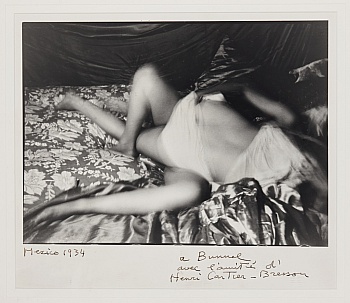 Christie’s a l’honneur d’annoncer la vente, le 14 novembre 2013, de photographies provenant de la collection personnelle d’Agathe Gaillard. Cet ensemble de 169 tirages est le fruit de rencontres et de coups de cœur de celle qui ouvrit la première galerie d’art parisienne consacrée à la photographie, rue du Pont Louis Philippe. De son ouverture à l’été 1975, jusqu’à sa fermeture en 2013, la galerie Agathe Gaillard aura organisé 250 expositions, consacrées à des créateurs aussi essentiels qu’André Kertesz ou Manuel Alvarez Bravo, accueilli des monstres sacrés comme Henri Cartier-Bresson et aidé à l’éclosion de jeunes talents comme Hervé Guibert ou Bernard Faucon. Elle a également accompagné l’incroyable éclosion de ...
Christie’s a l’honneur d’annoncer la vente, le 14 novembre 2013, de photographies provenant de la collection personnelle d’Agathe Gaillard. Cet ensemble de 169 tirages est le fruit de rencontres et de coups de cœur de celle qui ouvrit la première galerie d’art parisienne consacrée à la photographie, rue du Pont Louis Philippe. De son ouverture à l’été 1975, jusqu’à sa fermeture en 2013, la galerie Agathe Gaillard aura organisé 250 expositions, consacrées à des créateurs aussi essentiels qu’André Kertesz ou Manuel Alvarez Bravo, accueilli des monstres sacrés comme Henri Cartier-Bresson et aidé à l’éclosion de jeunes talents comme Hervé Guibert ou Bernard Faucon. Elle a également accompagné l’incroyable éclosion de ... Eugène Atget ouvre la vente de photographies avec quatre très beaux tirages albuminés dont un rare Nu de la série « Paris Pittoresque III » de 1921 (3 000-4 000 €). Un autre tirage de ce « Nu » figurait dans la Collection de Man Ray. Il est actuellement conservé à la George Eastman House, Rochester, N.Y.
La sculpture très renommée de « Léda » de Constantin Brancusi, 1921, photographiée par l’auteur, est représentée par un tirage d’époque exceptionnel (15 000-20 000 €).
MAN RAY : Très rare ouvrage « Résurrection des mannequins » avec les mannequins réalisés par Salvador Dali, Oscar Dominguez, Marcel Duchamp, Max Ernst, Andr...
Eugène Atget ouvre la vente de photographies avec quatre très beaux tirages albuminés dont un rare Nu de la série « Paris Pittoresque III » de 1921 (3 000-4 000 €). Un autre tirage de ce « Nu » figurait dans la Collection de Man Ray. Il est actuellement conservé à la George Eastman House, Rochester, N.Y.
La sculpture très renommée de « Léda » de Constantin Brancusi, 1921, photographiée par l’auteur, est représentée par un tirage d’époque exceptionnel (15 000-20 000 €).
MAN RAY : Très rare ouvrage « Résurrection des mannequins » avec les mannequins réalisés par Salvador Dali, Oscar Dominguez, Marcel Duchamp, Max Ernst, Andr...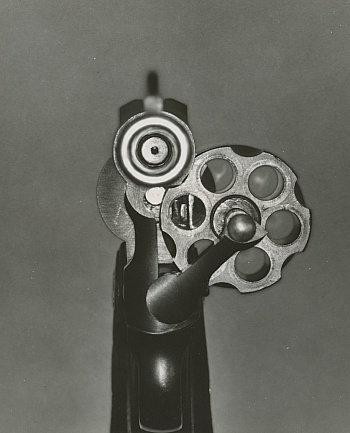 Michael Hoppen Gallery's press release
Part of the fascination with all photography is that the medium is firmly grounded in the documentary tradition. It has been used as a record of crime scenes, zoological specimens, lunar and space exploration, phrenology, fashion and importantly, art and science. It has been used as ‘proof’ of simple things such as family holidays and equally of atrocities taking place on the global stage. Any contemporary artist using photography has to accept the evidential language embedded in the medium.
In this exhibition the Michael Hoppen Gallery exhibits a myriad of different images including 19th, 20th c. and contemporary works of art. Seemingly disparate these images have a shared gravitas, a weightiness that emanates from their documentary function. Many ...
Michael Hoppen Gallery's press release
Part of the fascination with all photography is that the medium is firmly grounded in the documentary tradition. It has been used as a record of crime scenes, zoological specimens, lunar and space exploration, phrenology, fashion and importantly, art and science. It has been used as ‘proof’ of simple things such as family holidays and equally of atrocities taking place on the global stage. Any contemporary artist using photography has to accept the evidential language embedded in the medium.
In this exhibition the Michael Hoppen Gallery exhibits a myriad of different images including 19th, 20th c. and contemporary works of art. Seemingly disparate these images have a shared gravitas, a weightiness that emanates from their documentary function. Many ...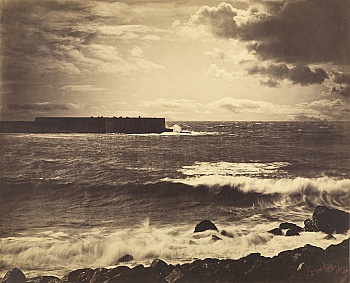 Wadsworth Atheneum Museum of Art's press release
Collecting is a curious vice, it changes your whole life—your whole way of looking at the world. – Samuel J. Wagstaff Jr. 1978
Hartford, Conn. (Sept. 9, 2016) – In the first major photography survey displayed at the museum in 27 years, the Wadsworth Atheneum Museum of Art will present, “The Thrill of the Chase: The Wagstaff Collection of Photographs at the J. Paul Getty Museum,” Sept. 10 through Dec. 11. The exhibition offers a selection of nearly 100 photographs from the personal collection of Samuel J. Wagstaff Jr. (American, 1921–1987), and spans the history of photography over 150 years, tracing the artistic and technical development of this art form through the eye of an influential collector. “The Wagstaff Collectio...
Wadsworth Atheneum Museum of Art's press release
Collecting is a curious vice, it changes your whole life—your whole way of looking at the world. – Samuel J. Wagstaff Jr. 1978
Hartford, Conn. (Sept. 9, 2016) – In the first major photography survey displayed at the museum in 27 years, the Wadsworth Atheneum Museum of Art will present, “The Thrill of the Chase: The Wagstaff Collection of Photographs at the J. Paul Getty Museum,” Sept. 10 through Dec. 11. The exhibition offers a selection of nearly 100 photographs from the personal collection of Samuel J. Wagstaff Jr. (American, 1921–1987), and spans the history of photography over 150 years, tracing the artistic and technical development of this art form through the eye of an influential collector. “The Wagstaff Collectio...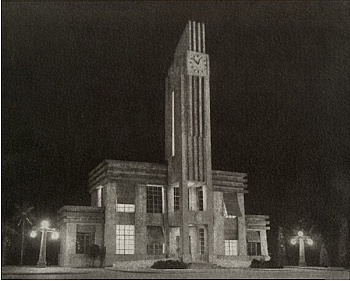 Words like the following can be used when discussing experimental photography: solarization, photogram, vortograph, rayograph, photomontage, manipulated negatives, time-lapse, double exposure, sandwiched negatives, photo-assemblage, cameraless, light-box, pinhole, camera obscura, collage, photo sculpture.
©Gertrud Arndt,
Wera Waldek
(negative), 1930
Gelatin silver
This is not a finite list of terms, but the idea is there are a multitude of ways to make a photograph, and some not conceived yet. The camera may or may not be used; the principle is mainly creative use of light.
Use of these methods started in 1826, when the first permanent photograph was invented by Nicéphore Niépce.
©Horacio Coppola,
Egg and Sting, 1932
Gelatin silver
PDNB Gallery will feature many ar...
Words like the following can be used when discussing experimental photography: solarization, photogram, vortograph, rayograph, photomontage, manipulated negatives, time-lapse, double exposure, sandwiched negatives, photo-assemblage, cameraless, light-box, pinhole, camera obscura, collage, photo sculpture.
©Gertrud Arndt,
Wera Waldek
(negative), 1930
Gelatin silver
This is not a finite list of terms, but the idea is there are a multitude of ways to make a photograph, and some not conceived yet. The camera may or may not be used; the principle is mainly creative use of light.
Use of these methods started in 1826, when the first permanent photograph was invented by Nicéphore Niépce.
©Horacio Coppola,
Egg and Sting, 1932
Gelatin silver
PDNB Gallery will feature many ar... Words like the following can be used when discussing experimental photography: Solarization, Photogram, Vortograph, Rayograph, photomontage, manipulated negatives, time-lapse, double exposure, sandwiched negatives, photo-assemblage, cameraless, light-box, pinhole, camera obscura, collage, photo sculpture.
This is not a finite list of terms, but the idea is there are a multitude of ways to make a photograph, and some not conceived yet. The camera may or may not be used; the principle is mainly creative use of light.
Use of these methods started in 1826, when the first permanent photograph was invented by Nicéphore Niépce.
PDNB Gallery will feature many artists who have created new pathways using light to extract unique images. This group exhibition will showcase many examples of these methods.
...
Words like the following can be used when discussing experimental photography: Solarization, Photogram, Vortograph, Rayograph, photomontage, manipulated negatives, time-lapse, double exposure, sandwiched negatives, photo-assemblage, cameraless, light-box, pinhole, camera obscura, collage, photo sculpture.
This is not a finite list of terms, but the idea is there are a multitude of ways to make a photograph, and some not conceived yet. The camera may or may not be used; the principle is mainly creative use of light.
Use of these methods started in 1826, when the first permanent photograph was invented by Nicéphore Niépce.
PDNB Gallery will feature many artists who have created new pathways using light to extract unique images. This group exhibition will showcase many examples of these methods.
...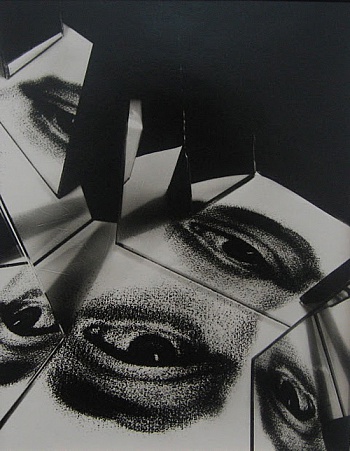 Words like the following can be used when discussing experimental photography: solarization, photogram, vortograph, rayograph, photomontage, manipulated negatives, time-lapse, double exposure, sandwiched negatives, photo-assemblage, cameraless, light-box, pinhole, camera obscura, collage, photo sculpture.
This is not a finite list of terms, but the idea is there are a multitude of ways to make a photograph, and some not conceived yet. The camera may or may not be used; the principle is mainly creative use of light.
Use of these methods started in 1826, when the first permanent photograph was invented by Nicéphore Niépce.
...
Words like the following can be used when discussing experimental photography: solarization, photogram, vortograph, rayograph, photomontage, manipulated negatives, time-lapse, double exposure, sandwiched negatives, photo-assemblage, cameraless, light-box, pinhole, camera obscura, collage, photo sculpture.
This is not a finite list of terms, but the idea is there are a multitude of ways to make a photograph, and some not conceived yet. The camera may or may not be used; the principle is mainly creative use of light.
Use of these methods started in 1826, when the first permanent photograph was invented by Nicéphore Niépce.
... Photography has illuminated so many areas of the 20th century, but none more so than the remarkable work by one of photography’s true pioneers, Dr. Harold Edgerton. As an Institute Professor at MIT, and the inventor of the ‘strobe’ flash in the early 1930’s, the ‘Doc.’ as he was affectionately known, stopped time in its tracks. For the first time we were able to see the wonderful arc of the tennis racket or a bullet breaking a sheet of glass.
A scientist first and foremost he was pivotal in developing early aerial and oceanic reconnaissance. During WWII he pioneered the use of a strobe light powerful enough to take night time reconnaissance images. The resulting images revealed an absence of German forces at key strategic points just prior to the Allied attack on June 6, 1944. H...
Photography has illuminated so many areas of the 20th century, but none more so than the remarkable work by one of photography’s true pioneers, Dr. Harold Edgerton. As an Institute Professor at MIT, and the inventor of the ‘strobe’ flash in the early 1930’s, the ‘Doc.’ as he was affectionately known, stopped time in its tracks. For the first time we were able to see the wonderful arc of the tennis racket or a bullet breaking a sheet of glass.
A scientist first and foremost he was pivotal in developing early aerial and oceanic reconnaissance. During WWII he pioneered the use of a strobe light powerful enough to take night time reconnaissance images. The resulting images revealed an absence of German forces at key strategic points just prior to the Allied attack on June 6, 1944. H... Feroz Galerie is delighted to present an exhibition of photographic work by the American scientist and photographer Dr. Harold Edgerton (1903-1990). An early pioneer in stroboscopic photography, Edgerton’s technological developments have extended our vision and revolutionized the medium. We have many varied examples of his work including multiflash and stroboscopic pictures from his experiments capturing motion sequences onto a single piece of film. Also on show are nighttime aerial reconnaissance photographs, atomic bomb explosions and cameraless shadow photographs of bullets captured in their trajectory.
« In many ways, unexpected results are what have most inspired my photography », Dr. Harold Edgerton.
© Harold Edgerton - Antique Gun Firing, 1936
...
Feroz Galerie is delighted to present an exhibition of photographic work by the American scientist and photographer Dr. Harold Edgerton (1903-1990). An early pioneer in stroboscopic photography, Edgerton’s technological developments have extended our vision and revolutionized the medium. We have many varied examples of his work including multiflash and stroboscopic pictures from his experiments capturing motion sequences onto a single piece of film. Also on show are nighttime aerial reconnaissance photographs, atomic bomb explosions and cameraless shadow photographs of bullets captured in their trajectory.
« In many ways, unexpected results are what have most inspired my photography », Dr. Harold Edgerton.
© Harold Edgerton - Antique Gun Firing, 1936
... Alors que notre regard est submergé quotidiennement par une iconographie abondante, nous oublions l'essence même de ces images à voir. La photographie est affichée dans la rue, orne et illustre notre presse, alimente jusqu'à l'encombrement, notre visuel technologique. Elle est si présente qu'elle arrive à brouiller les pistes comme une élégante lady qui parvient à dissimuler son âge.
L'image n'est pas dur au hasard ni à l'appareil photographique, elle est l'eouvre d'un auteur, d'un créateur de mondes, d'un poète ou d'un inventeur.
La première image est obtenue le 5 mai 1816 par Joseph Nicéphore Niépce, il n'arrive pas à transformer ses n...
Alors que notre regard est submergé quotidiennement par une iconographie abondante, nous oublions l'essence même de ces images à voir. La photographie est affichée dans la rue, orne et illustre notre presse, alimente jusqu'à l'encombrement, notre visuel technologique. Elle est si présente qu'elle arrive à brouiller les pistes comme une élégante lady qui parvient à dissimuler son âge.
L'image n'est pas dur au hasard ni à l'appareil photographique, elle est l'eouvre d'un auteur, d'un créateur de mondes, d'un poète ou d'un inventeur.
La première image est obtenue le 5 mai 1816 par Joseph Nicéphore Niépce, il n'arrive pas à transformer ses n...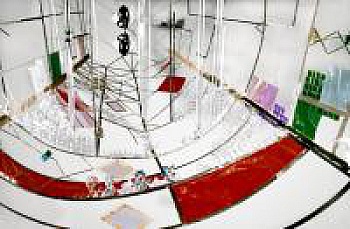 « It is another nature which speaks to the camera rather than to the eye » Walter Benjamin, Little History of Photography (1931)
Abstract photography challenges our popular view of photography as an objective image of reality by reasserting its constructed nature. In Walter Benjamin’s essay on the history of photography, the philosopher and critical theorist articulates photography’s « second nature » as its inherent ability to detach and abstract the visible from the real. Non-representational photography lives in this contested middle ground between material reality and photographic illusion—fact and fiction—first and second natures. Today, anyone who has a cell phone can take and send digital pictures instantaneously. In response to this snapshot culture, many art...
« It is another nature which speaks to the camera rather than to the eye » Walter Benjamin, Little History of Photography (1931)
Abstract photography challenges our popular view of photography as an objective image of reality by reasserting its constructed nature. In Walter Benjamin’s essay on the history of photography, the philosopher and critical theorist articulates photography’s « second nature » as its inherent ability to detach and abstract the visible from the real. Non-representational photography lives in this contested middle ground between material reality and photographic illusion—fact and fiction—first and second natures. Today, anyone who has a cell phone can take and send digital pictures instantaneously. In response to this snapshot culture, many art...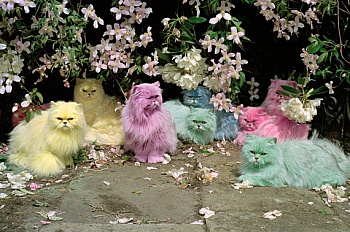 How do you describe colour?
Even the dictionary definition of it is poetic:
'That aspect of things that is caused by differing qualities of the light reflected or emitted by them, definable interms of the observer or of the light.'
And;
'a substance, such as a dye, pigment, or paint, that imparts a hue.'
And;
'a reddening of the face; a blush'.
The scientific words to objectify it are beautiful too: hyperchromatism, wavelength, luminance, iridescence and purity.
Since 1861 and the first permanent colour print by James Clerk Maxwell, photographers have been able to define their subjects in a more immediate and creative way using colour- stripping it out, intensifying or limiting it. The Michael Hoppen Contemporary Christmas show about a group of artists who utilize cyan, magenta, yellow and black i...
How do you describe colour?
Even the dictionary definition of it is poetic:
'That aspect of things that is caused by differing qualities of the light reflected or emitted by them, definable interms of the observer or of the light.'
And;
'a substance, such as a dye, pigment, or paint, that imparts a hue.'
And;
'a reddening of the face; a blush'.
The scientific words to objectify it are beautiful too: hyperchromatism, wavelength, luminance, iridescence and purity.
Since 1861 and the first permanent colour print by James Clerk Maxwell, photographers have been able to define their subjects in a more immediate and creative way using colour- stripping it out, intensifying or limiting it. The Michael Hoppen Contemporary Christmas show about a group of artists who utilize cyan, magenta, yellow and black i... UN ENSEMBLE DE PLUS DE 70 PHOTOGRAPHIES
Lune, mars, soleils et éclipses/ Eclairs et magnétisme/ Microscope et rayons X/ Sciences naturelles
Avec des images de Laure Albin-Guillot, Eugène Atget, Amelia Bergner, Blanca Casas-Brullet, Ralph Bartholomew, Barbara Crane, Harold Edgerton, Jules Janssen, Bogdan Konopka, Aki Lumi, Adrien Majewski, Ann Mandelbaum, Jules Etienne Marey, Mount Wilson Observatory, Eadweard Muybridge, NASA, Observatoire du Pic du Midi, Ian Paterson, Dimitri Rebikoff, Service de Santé de l'Armée, Nancy Wilson-Pajic....
Photo 1 Jules-Etienne Marey - Autoportrait avec Charles Frémont - 1894
Photo 2 Observatoire du Pic du Midi - Eclipse totale de soleil - 1961...
UN ENSEMBLE DE PLUS DE 70 PHOTOGRAPHIES
Lune, mars, soleils et éclipses/ Eclairs et magnétisme/ Microscope et rayons X/ Sciences naturelles
Avec des images de Laure Albin-Guillot, Eugène Atget, Amelia Bergner, Blanca Casas-Brullet, Ralph Bartholomew, Barbara Crane, Harold Edgerton, Jules Janssen, Bogdan Konopka, Aki Lumi, Adrien Majewski, Ann Mandelbaum, Jules Etienne Marey, Mount Wilson Observatory, Eadweard Muybridge, NASA, Observatoire du Pic du Midi, Ian Paterson, Dimitri Rebikoff, Service de Santé de l'Armée, Nancy Wilson-Pajic....
Photo 1 Jules-Etienne Marey - Autoportrait avec Charles Frémont - 1894
Photo 2 Observatoire du Pic du Midi - Eclipse totale de soleil - 1961...